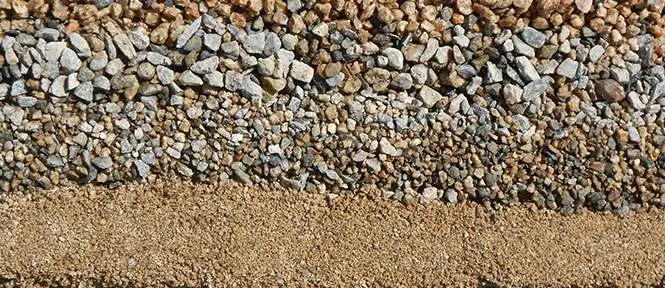Block, Brick, and Paver Aggregate
Block, Brick and Paver Stone materials that we supply are very similar to the fine aggregate portion of Portland Cement Concrete (PCC). Washed concrete sands, with an emphasis on color consistency, are typically used in combination with a coarse aggregate of approximately 5/16″ in diameter. Moisture content is very important to these aggregates, as the end use is usually a mold-based production line, and consistency is very important.
Although some variation in aggregate properties is expected, a few characteristics that should be considered when selecting aggregate for Block, Brick, and Paver applications include:
- size and grading
- cleanliness
- soundness
Size and Grading
The maximum size of an aggregate designates the smallest sieve size through which 100 percent of the material will pass. Grading of an aggregate is determined by sieve analysis. Maximum size and grading are controlled by specifications that prescribe the distribution of particle sizes to be used for a particular aggregate material for mixtures. The distribution of the particle sizes help determine the stability and density of the mixture.
Cleanliness
Some aggregates contain foreign or deleterious substances that make them undesirable for concrete mixtures. (Example: clay lumps, shale, organic material, etc.) The sand-equivalent test, is a method of determining the relative proportion of detrimental fine dust or clay-like materials in the portion of aggregate passing the No. 4 (4.75 mm) sieve.
Soundness
Aggregates for Block, Brick and Paver Stone materials should be durable. They should not deteriorate or disintegrate under the action of weather. Items for consideration under weathering action are freezing, thawing, variations in moisture content, and temperature changes. The soundness test is an indication of the resistance to weathering of fine and coarse aggregates.
Block, Brick, and Paver Stone aggregates are monitored through our continuous quality control program when in production and prior to shipment. This testing is performed by our in-house testing facilities, independent laboratories, and finally by Governmental Agencies such as CalTrans. If you need any test data, please contact the location you are interested in.



